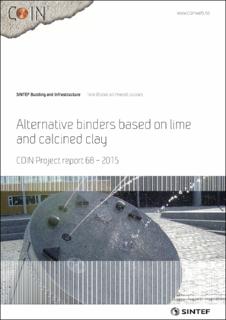Alternative binders based on lime and calcined clay
Research report
Published version
Date
2015Metadata
Show full item recordCollections
- COIN Project report [76]
- Publikasjoner fra CRIStin - SINTEF AS [5649]
- Rapporter fra SINTEF Community [777]
- SINTEF Community [2236]
Abstract
Alternative binders are in this report defined as binders without Portland cement. In this particular project it will be based on calcined clay or fly ash as a source of reactive silica and alumina in combination with lime and calcium sulphate (e.g. gypsum) and/or calcium carbonate to stabilize special calcium aluminate phases like ettringite and/or calcium monocarboaluminate hydrate, respectively. Gaining strength is all about maximizing the transformation of liquid water to hydrates with hydraulic properties as fast as possible. Hence, admixtures speeding up the reaction kinetics can be part of the formulations as well.
Two synergy principles have been described for making improved binders based on slaked lime and pozzolanic SCMs. One showing how neutral salts may accelerate by forming strong alkaline solutions in situ. Another one how calcium carbonate can play a role when alumina containing SCMs are used by leading to an even higher conversion of liquid water into solid hydrates leading to lower porosity and higher strength.
An example have been showed for a binder consisting of calcined clay, slaked lime and calcium carbonate on how mortars can achieve a 28 days compressive strength of about 25 MPa and 3 day strength exceeding 10 MPa when cured at 20°C when accelerated by sodium carbonate. The strength may have been improved further by having a slightly higher ratio of calcium hydroxide.
Calcined marl may substitute for calcined clay, but then the calcium carbonate content should be reduced in accordance with the remaining calcium carbonate content after calcination.
The formulations are not entirely correct according to the outlined 2nd principle since they rely on bulk chemical compositions and the fact that the commercial clay/marl was containing inert quarts or feldspars. Ideally the formulations should be made according to the content of clay minerals and their compositions only after subtracting the inert components. However, such a composition of reactive material may be difficult to arrive at.
